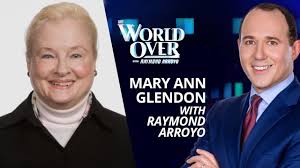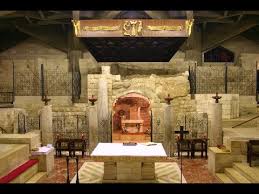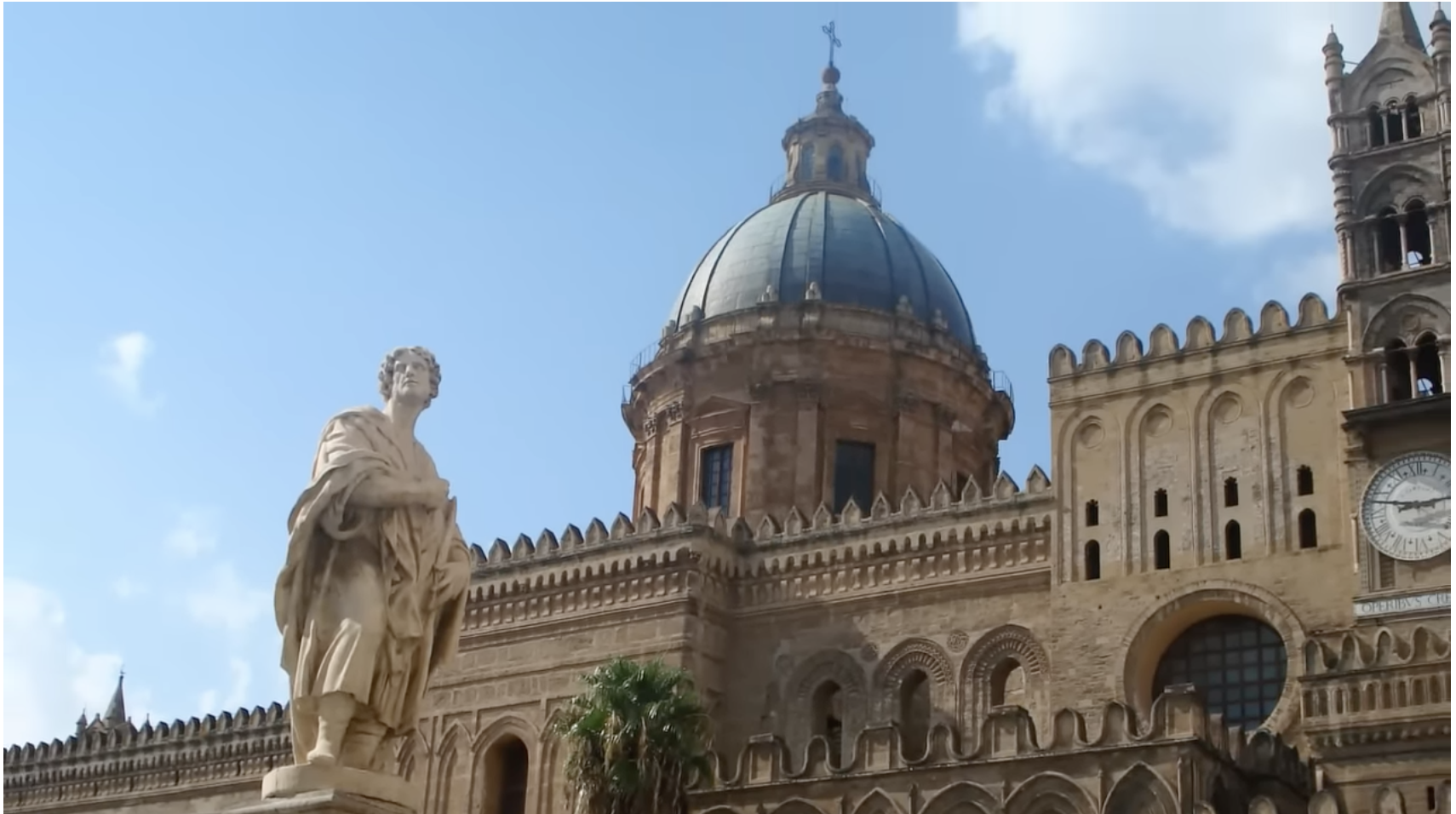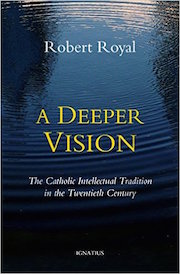Why did Our Blessed Lord use bread and wine as the elements of this Memorial? First of all, because no two substances in nature better symbolize unity than bread and wine. As bread is made from a multiplicity of grains of wheat, and wine is made from a multiplicity of grapes, so the many who believe are one in Christ. Second, no two substances in nature have to suffer more to become what they are than bread and wine. Wheat has to pass through the rigors of winter, be ground beneath the Calvary of a mill, and then subjected to purging fire before it can become bread. Grapes in their turn must be subjected to the Gethsemane of a wine press and have their life crushed from them to become wine. Thus do they symbolize the Passion and Sufferings of Christ, and the condition of Salvation, for Our Lord said unless we die to ourselves we cannot live in Him. A third reason is that there are no two substances in nature which have more traditionally nourished man than bread and wine. In bringing these elements to the altar, men are equivalently bringing themselves. When bread and wine are taken or consumed, they are changed into man’s body and blood. But when He took bread and wine, He changed them into Himself.
But because Our Lord’s Memorial was not instituted by His disciples but by Him, and because He could not be conquered by death, but would rise again in the newness of life, He willed that as He now looked forward to His redemptive death on the Cross, so all the Christian ages, until the consummation of the world, should look back to the Cross. In order that they would not reenact the Memorial out of whim or fancy, He gave the command to commemorate and announce His redemptive death until He came again! What He asked His Apostles to do was to set forth in the future this Memorial of His Passion, death and Resurrection. What He did looked forward to the Cross; what they did, and which has continued ever since in the Mass, was to look back to His redemptive death. Thus would they, as St. Paul said, “announce the death of the Lord until He came” to judge the world. He broke the bread to set forth the breaking of His own human Body and also to show that He was a Victim by His own free will. He broke it by voluntary surrender, before the executioners would break it by their voluntary cruelty.
When the Apostles and the Church later on would repeat that Memorial, the Christ, who was born of Mary and suffered under Pontius Pilate, would be glorified in heaven. That Holy Thursday Our Lord had given to them not another sacrifice than His unique Redemptive Act on the Cross; but He gave a new manner of Presence. It would not be a new sacrifice, for there is only one; He gave a new presence of that unique sacrifice. In the Last Supper, Our Lord acted independently of His Apostles in presenting His sacrifice under the appearances of bread and wine. After His Resurrection and Ascension and in obedience to the Divine command, Christ would offer His sacrifice to His Heavenly Father through them or depending on them. Whenever that sacrifice of Christ is memorialized in the Church, there is an application to a new moment in time and a new presence in space of the unique sacrifice of Christ Who is now in glory. In obeying His mandate, His followers would be representing in an unbloody manner that which He presented to His Father in the bloody sacrifice of Calvary.
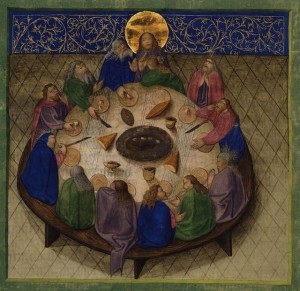
After changing the bread into His Body and the wine into His Blood: “He gave it to them.” (Mk 14:22) By that communion they were made one with Christ, to be offered with Him, in Him, and by Him. All love craves unity. As the highest peak of love in the human order is the unity of husband and wife in the flesh, so the highest unity in the Divine order is the unity of the soul and Christ in communion. When the Apostles, and the Church later on, would obey Our Lord’s words to renew the Memorial and to eat and drink of Him, the Body and Blood would not be that of the Physical Christ then before them, but that of the glorified Christ in heaven Who continually makes intercession for sinners. The Salvation of the Cross, being sovereign and eternal, is thus applied and actualized in the course of time by the heavenly Christ.
When Our Lord, after He changed the bread and wine to His Body and Blood, told His Apostles to eat and drink, He was doing for the soul of man what food and drink do for the body. Unless the plants sacrifice themselves to being plucked up from the roots, they cannot nourish or commune with man. The sacrifice of what is lowest must precede communion with what is higher. First His death was mystically represented; then communion followed. The lower is transformed into the higher; chemicals into plants; plants into animals; chemicals, plants, and animals into man; and man into Christ by communion. The followers of Buddha derive no strength from his life but only from his writings. The writings of Christianity are not as important as the life of Christ, Who living in glory, now pours forth on His followers the benefits of His sacrifice.
The one note that kept ringing through His life was His death and glory. It was for that that He came primarily. Hence the night before His death, He gave to His Apostles something which on dying no one else could ever give, namely, Himself. Only Divine wisdom could have conceived such a Memorial! Humans, left to themselves, might have spoiled the drama of His Redemption. They might have done two things with His death which would have fallen so short of the Way of Divinity. They might have regarded His redemptive death as a drama presented once in history like the assassination of Lincoln. In that case, it would have been only an incident, not a Redemption – the tragic end of a man, not the Salvation of humanity. Regrettably, this is the way so many look upon the Cross of Christ, forgetting His Resurrection and the pouring-out of the merits of His Cross in the Memorial Action He ordered and commanded. In such a case, His death would be only like a national Memorial Day and nothing more.
Or they might have regarded it as a drama which was played only once, but one which ought often to be recalled only through meditating on its details. In this case, they would go back and read the accounts of the drama critics who lived at the time, namely, Matthew, Mark, Luke, and John. This would be only a literary recall of His death, as Plato records the death of Socrates, and would have made the death of Our Lord no different from the death of any man. Our Lord never told anyone to write about His Redemption, but He did tell His Apostles to renew it, apply it, commemorate it, prolong it by obeying His orders given at the Last Supper. He wanted the great drama of Calvary to be played not once, but for every age of His own choosing. He wanted men not to be readers about His Redemption, but actors in it, offering up their body and blood with His in the re-enactment of Calvary, saying with Him, “This is my body and this is my blood” dying to their lower natures to live to grace; saying that they cared not for the appearance or species of their lives such as their family relationships, jobs, duties, physical appearance, or talents, but that their intellects, their wills, their substance—all that they truly were—would be changed into Christ; that the Heavenly Father looking down on them would see them in His Son, see their sacrifices massed in His sacrifice, their mortifications incorporated with His death, so that eventually they might share in His glory.


